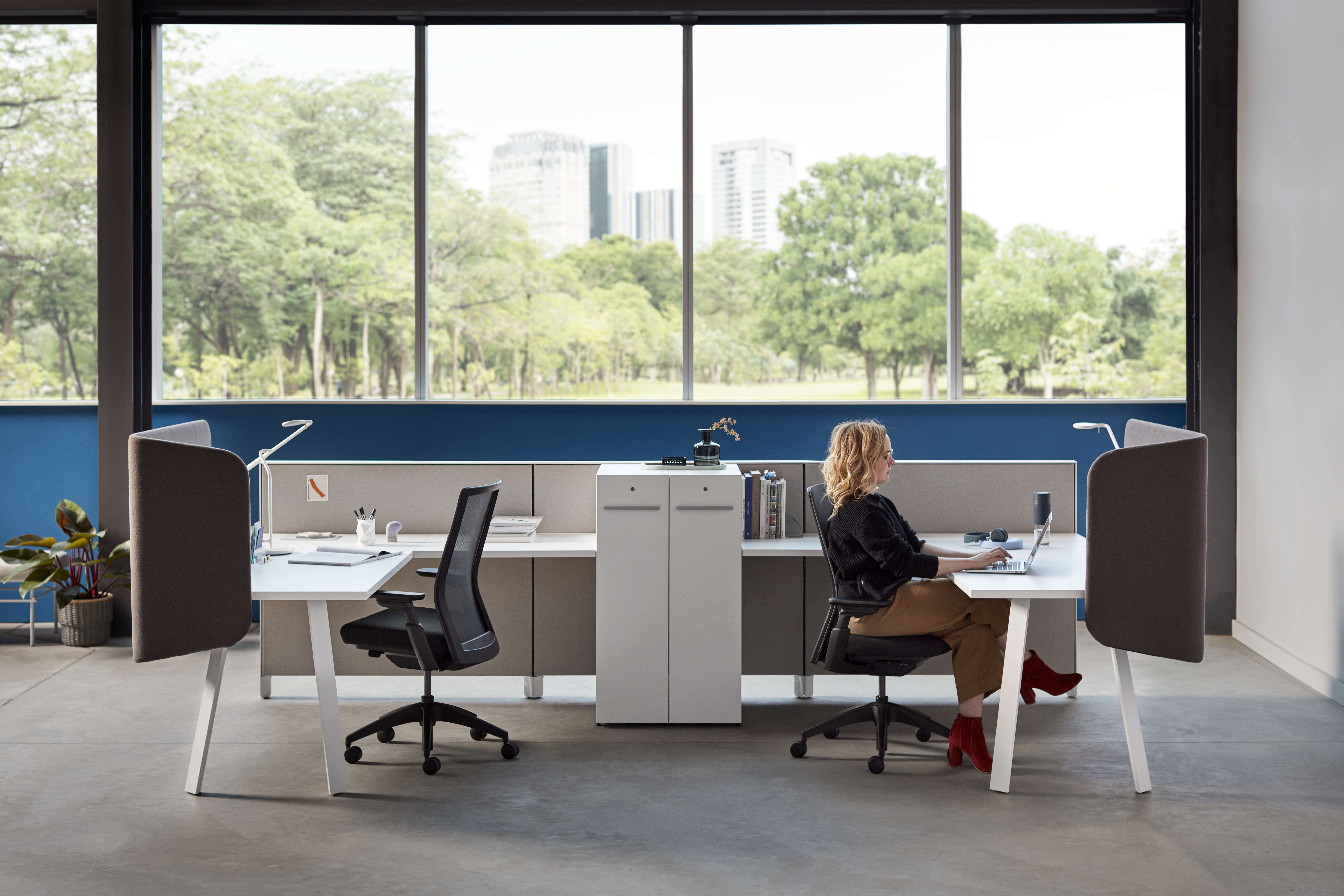As we all adjust to today’s reality of government stay at home orders, keeping a 6 feet buffer between each other, disinfecting high-touch surfaces, wearing masks while in public, and obsessively hand washing; you may be wondering, what else should I do?
Should I order my new home or office products with an antimicrobial treatment or an embedded chemical that kills microbes?
As a manufacturer of office furniture, we are being asked similar questions. Will antimicrobials help keep my employees safe? Do they provide the benefits touted and will they help deter the spread of COVID-19? What about the concerns of groups like Heathier Hospitals that advocate for selecting products free of these chemicals?
What are Antimicrobials?
The word antimicrobial refers to all agents that act against microbial organisms. Antimicrobial products kill or slow the spread of microorganisms, including bacteria, viruses, protozoans, and fungi such as mold and mildew.1
The U.S. Environmental Protection Agency (EPA) regulates antimicrobial products as pesticides, and the U.S. Food and Drug Administration (FDA) regulates antimicrobial products as drugs/antiseptics.
- As pesticides, antimicrobial products are used on objects like work surfaces or in textiles.
- As antiseptics, antimicrobial products are used to treat or prevent diseases on people, pets, and other living things.
Many different chemicals are registered with the EPA as antimicrobials. The antimicrobial additives in consumer and commercial products are usually chemicals (like Triclosan or Triclocarban) or metals (like copper, silver or zinc) that are applied to the materials either during manufacturing as a treatment or as part of the finishing process.
Why would a manufacturer add an antimicrobial to a product?
One of the main reasons a product manufacturer would add an antimicrobial chemical is to help protect the material from product deterioration. Antimicrobials may be added to protect the material itself from bacteria growth, mold growth, and in some cases, algae that can cause stains and odors.
A good example is a fiberglass used in HVAC systems. An antimicrobial agent is sometimes applied to the fiberglass to prevent the growth of mold and mildew which could be caused by condensation on the metal HVAC components. Another example is a laminate surface that will be used in a bathroom or kitchen setting and will be in contact with water or other wet items regularly. An antimicrobial could aid in this application by preventing mold or mildew growth, or by protecting the laminate surface against stains and odors.
Should end-users be specifying antimicrobials on all surfaces to protect against COVID-19?
In short, no. While we have seen many claims from material suppliers on the benefits of their antimicrobial additives, to the best of our knowledge at this time, no suppliers or manufacturers of the antimicrobial additives claim to be effective at killing viruses. For example, Microban, a well-known antimicrobial formulator has posted this statement on their website pertaining to COVID-19:
“Recently, many of Microban’s customers have questions about the effectiveness of Microban’s built-in antimicrobial technologies against coronavirus COVID-19. Microban is the world leader in antimicrobial technologies and odor control solutions. Microban also has other product lines related to disinfection. Our built-in antimicrobial technologies are effective against a plethora of product damaging microbes, but are not currently proven to have any antiviral properties when built-into products…”
There may also be risks to human health that should be addressed. First, there is still research to be done on the chronic human health impacts of long-term exposure to antimicrobial chemicals or additives. Second, there is public health concern with the ubiquitous use of some antimicrobials in products. Widespread use can lead to potential health risks, along with potential antibiotic resistant strains of bacteria that have adapted through continued exposure to some antimicrobials, similar to the “superbugs” that develop from overuse of antibiotics in people and animals.
In some cases, antimicrobial chemicals aren’t used in high-enough concentrations to kill all the bacteria on a surface. Some bacteria may survive, begin to adapt, and then pass that adaptation down genetically. This can leave us with strains of bacteria that are no longer affected by that particular antimicrobial chemical. If a person contracts that strain of resistant bacteria, it may become more difficult to treat with common antibiotics.
Finally, there can be a false sense of security with antimicrobials. End users may think they no longer need to disinfect or clean their-high touch surfaces as often because they purchased a laminate worksurface with an antimicrobial finish. What they may not realize is that antimicrobial was added to protect against mold growth and stains, and will not kill many of the microbes that end up on the surface from regular use. They would be better off specifying a finish with no antimicrobials and establishing a robust cleaning and disinfecting procedure using the CDC guidelines.
Bottom Line:
By adding antimicrobials to products in most office spaces – where most of the time they are not needed – office environments may be made more unsafe through the promotion of antibiotic resistance and a false sense of security, which could lead to less effective cleaning strategies. A better solution would be to specify fabrics and finishes that can withstand the ever-evolving aggressive cleaning and disinfecting solutions over time, with minimal deterioration.
Disclaimer:
“We manufacture office furniture products and do not have any affiliation with the creators or formulators of antimicrobial chemicals or technologies. The information presented in this blog post was informed by research articles and by information received from material suppliers and presented on public websites. The information provided is solely intended to be a general summary of our understanding and opinion on this topic as it relates to office furniture.”
For Further Reading:
New York Post, Antibacterial products are creating antibiotic resistant superbugs
Science Daily: Toothpaste and hand wash are causing antibiotic resistance
Some antibacterials come with worrisome silver lining
Consumer Reports: These common household products can destroy the novel coronavirus
EPA: Disinfectants for use against SARS-CoV-2
Toxic-Free Future: Antimicrobial products: Who needs them?
Cleaning & Maintenance Management: Pros and cons of antimicrobial surface coatings
Wired: The FDA’s antibacterial soap ban is bad news for superbugs
National Pesticide Information Center: Antimicrobials topic fact sheet
References:
- What are Antimicrobial Pesticides?; U.S Environmental Protection Agency, Office of Prevention, Pesticides, and Toxic Substances, Office of Pesticide Programs, U.S. Government Printing Office: Washington, DC, 2010.
- https://amrls.cvm.msu.edu/pharmacology/antimicrobials/antimicrobials-an-introduction
- https://www.microban.com/
- OSHA Guidance on Preparing Workplaces for COVID-19
- CDC Guidance on Cleaning and Disinfecting Your Facility





